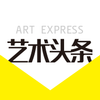分享到微信,
请点击右上角。
再选择[发送朋友]
或[分享到朋友圈]

A piece of specially made xuan paper impressed with five thousand human fingerprints does not seem to be fundamentally different from one with a hundred thousand fingerprints, if such works from the same Fingerprints series by Zhang Yu, who uses ink, color or water in his finger printing, are nothing more than a new type of visual art products. If this is the case, one only needs to view one piece and ignore the rest of many similarly made works since they appear to a large extent sheer reproduction of each other. Such an attitude for understanding Zhang’s fingerprint works is common among quite a few art critics and writers, who tend to categorize Zhang Yu’s recent work as belonging to abstract art, minimalist art or “maximalist” art, or simply a varied continuation of experimental ink art of which Zhang was once a leader. Many of these writers pay much of their attention to the special visual effects created by the artist’s act of fingerprinting, such as the shape, depth and tonality of the actual fingerprints left on paper or silk. Others compare Zhang’s fingerprinting to the practice in the traditional genre of finger painting, thus highly praising the artist for his success in creating new formal elements. In general, most of the critics who write on Zhang Yu’s fingerprint works follow an approach that is largely based on stylistic analysis. Such an approach, however, does not seem to do the job especially when it comes to Zhang’s more recent works such as these shown in his one-person exhibition “Proliferating Fingerprints”. This is because the paper or silk works on display are not necessarily the complete part of the artwork. The very action and process of finger printing itself, which is demonstrated in the videos included in the show, should be taken as an inseparable part of the final work.
The main part of Zhang Yu’s artistic trajectory from the mid-1980s to the late 1990s is his enthusiastic exploration of new styles in ink painting, which echoes the basic development and transformation of painting, both ink and oil, in China of this time period. Stylistic analysis is thus a necessary and useful method for understanding Zhang’s work from this time period. But works from Fingerprint series that Zhang started from the early 21st century are created not to demonstrate any breakthrough in style or artistic language, but to exhibit a quintessential change in artistic concept. They show that Zhang Yu has transformed himself from a painter who uses ink as his only medium into an artist who takes artistic concept as the core part of his creation. Such a transformation is not only significant for Zhang himself as an individual artist, but it also embodies the drastic changes in the art world of today’s China, since Zhang Yu, as many writers point out, has been a leading figure in the movement of innovating Chinese ink art. His transformation, however, is unfolded on different levels.
In Zhang Yu’s works from the mid-1980s to the early 1990s, there is a strong sense of uncertainty, both in subject and in style. He seemed to be excited yet undecided, confused but persistent in his humanistic concerns about China’s reality and in his fascination with Western formalism. This uncertainty is especially apparent in his Fan Series from the 1980s, and his Portrait Series and Random Thoughts from the early 1990s. Zhang’s aspiration for establishing an artistic style of his own is finalized in his Light of Spirit series that he focused on in the mid- and late 1990s. There has been some debate whether these paintings should be categorized as abstract art. But the debate missed one important point, that is, it was from this very time that Zhang became increasingly interested in visual effects that are not necessarily related to painting as well as non-traditional ways of dealing with painting materials. He started his bold move of stepping out of painting and into conceptual art. His experiments in Daily News series, which are collages of ink on paper with used newspapers, reveal his uneasy attachment to painting, but more of his disappointment with painting’s incapability of fully expressing his ideas. But soon Zhang found his solution to the conflicts between his visual and conceptual expectations. The solution is best demonstrated in his Fingerprint series, which marks his complete departure from painting and an entire ignorance of style. It is a method that puts more emphasis on the quality and characteristics of material and on the process of the body interacting with materials.
Zhang’s shift from stylistic pursuit to material experience is a reflection of the more profound and dramatic social change of art in China of this time period. China’s art and culture revival movement from the 1980s to the late 20th century is often embedded with, whether or not self-consciously, the people’s republic’s ambitious and macroscopic pursuit of the nation’s revival and its eager search for a new cultural identity. Built in the pursuit is a strong sense of historical mission, which in art is represented by excessive emphasis on the concept of Chineseness as seen in such terms as Chinese art and Chinese painting. Such a mission was shared by Zhang Yu and his contemporary artists, which is not only evident in his early innovative ink paintings but also in his writings. Although this mission has not entirely vanished in Zhang’s more recent work, it has been tremendously reduced by his search for a global and universal art that transcends the boundaries of national art and culture. The formerly collective mission evident in Zhang’s early work has now been replaced by an emphasis on individualistic experience, and the enthusiasm for humanistic concern has been cooled down by a Chan-style meditative approach. Therefore, the seemingly stimulating and disturbing red color in Proliferating Fingerprints no longer gives the audience any excitement as before, but rather it contrasts with the fingerprints arranged in such a tranquil, peaceful and orderly way. The sense of tranquility is thus intensified. The individualistic passions that have long been immersed in and suppressed by the collective mission are now effectively shown. Zhang Yu’s works, or rather products, no longer need to be labeled as “Chinese” because they are now results of an individual’s art activities.
Zhang’s individuality as an artist is by no means entirely displayed in the finished works shown in the exhibition. The silk pieces printed with Zhang Yu’s right hand index finger that the audience sees, despite the way in which it is displayed, are simply the results of the short ending part of a long process of Zhang’s performance. For the artist, what he is fascinated with is not the xuan paper or silk that is eventually impressed with his fingerprints, but rather the direct touch and corporation between two heterogeneous bodies that he experiences during his contact with paper or silk. Such a special contact and communication between human body and physical substance opens up a new possibility for the artist to feel his existence in his very response to heterogeneous objects. This feeling of existence starts when the process begins and ends when the process is completed. This special contact provides different experiences when the quality of paper or silk is different and because the water, ink and/or color that the artist uses each time is different. Although these materials, paper, silk, ink, color and water, are the primary elements in traditional Chinese painting, their changed relationship with the artist has transformed them from auxiliary materials used for creating imagery into objects that are equal to the artist in their direct interaction and dialogue with the artist. The life of these materials that have long been regarded lifeless and passively usable is now fully represented and respected. The quality of paper or silk is thus shown through the artist’s printing under various pressures, which completely reveals such qualities as thickness, texture and light. The nuanced variation of water due to its mineral substance is also shown through the artist’s finger printing on xuan paper or silk of different texture. Likewise, ink and color are no longer simple elements as were in traditional art that were meaningful only as attachments to icons or characters. They are now totally detached from their usual relationship with painting and calligraphy, and thus become absolutely independent materials. Although the cultural dimension of these materials will not immediately disappear in the context of Chinese culture, they will certainly be more universally recognized, perceived and accepted in an era of accelerating globalization.
Zhang Yu’s change from macroscopic imagination and humanistic concern of reality to obsessive physical contact with objects and fascination with internal experience is not only a reflection of the time’s dramatic change but it also reflects his sensitive and swift response to the rapidly changing world. In the period of speedy modernization and accelerating globalization, the fast changing reality of China has created a strange sense of loss in many people who find it hard to deal with or to fit in the changing reality. China’s tremendous leap from a backward agricultural society of thirty years ago to a rapidly urbanizing industrial and informational society has resulted in a social unsteadiness that leads to an unprecedented loss of psychological balance, which further produces confusion, frustration, delusion and surreal sense of incredible melancholy. The easiness and confidence people used to have in their understanding of the external world have been crushed into pieces in the very reality of fast changing technology, which results in alienation and an increasing sense of panic and kainotophobia. Driven by this phobia, many choose to turn or escape to their internal world in search of tranquility that is missing in the external world. As technological progress accelerates, human beings are weakening both emotionally and spiritually, and more than ever before they are occupied with a strong sense of helplessness. For many, exploring the body and the inner self has become an effective solution to releasing such phobia and saving themselves from vulnerability. Furthermore, artists in China over the past three decades have undergone a dramatic change in their social role, which has turned them from elites of the government sponsored cultural system into self-dependent individuals in the society. Although their financial situation has been profoundly improved, their social status has become lower and more vulnerable in a political system that has been declining change. This is also one primary reason why many artists in China have turned away from collective mission to concerns with the reality of individuals.
Zhang Yu’s evolution as artist over the past two decades is a process of changes that underwent shifts from painting to performance, from style to material and from result to process. His continuous and swift change is an embodiment of the dilemmatic situation of artists with a Chinese painting background who struggle between attachment to and departure from the tradition. The fingerprint marks that Zhang Yu left on paper and silk are traces of his long search for artistic innovation. What he has achieved in the process is the victory of material over style and that of the conceptual over the visual. His Fingerprints series is the realization of his ambition to “terminate” ink painting, while his “Proliferating Fingerprints” is but a further proof to the fact that ink painting as a genre characteristic of the Chinese tradition is moving to its very destination of demise. What Zhang Yu is trying to terminate, however, is ink painting as a traditional art form, not ink with water, which certainly will be ever lasting.
(In Kew Gardens of New York City, November, 2010)
作者:Zhijian,Qian

分享到微信,
请点击右上角。
再选择[发送朋友]
或[分享到朋友圈]

